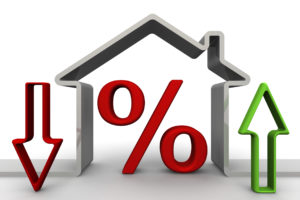“There is no worse tyranny than to force a man to pay for what he does not want merely because you think it would be good for him.”
– Robert Heinlein
 As Carmel property owners across the city opened their 2019 property tax bills, they discovered sizable increases over amounts owed in 2018. With the aggregate tax rate relatively unchanged from last year, why then the larger bills in 2019?
As Carmel property owners across the city opened their 2019 property tax bills, they discovered sizable increases over amounts owed in 2018. With the aggregate tax rate relatively unchanged from last year, why then the larger bills in 2019?
Hamilton County continues to enjoy a rapid run-up in property values and – thus – assessed value of each property up to the cap limits. If a property (particularly a residence) has not yet reached the cap, the amount of its assessed value subject to property taxes will continue to increase until it reaches the cap limit. These cap limits are:
1% of assessed value for homestead (owner-occupied) properties;
2% for all other residential and agricultural land; and
3% for all other properties (commercial, industrial, etc.)
However, annual reassessment of properties has led to annual increases in assessed value. Often, these increases exceed 6%-10% each year. Therefore, the amount of assessed value subject to tax caps increases rather substantially along with the assessed value itself.

What factors are driving demand and this run-up in property values? Interest rates remain near historic lows and lending standards that were tightened during the Great Recession of 2007-2008 have been loosed significantly. Moreover, the influx of new businesses into Carmel, other Hamilton County communities and the greater Indianapolis metropolitan area are putting demand pressures on housing in the “doughnut” counties surrounding Indianapolis.
 This creates a conundrum for homeowners. Many that have owned their home for more than 3-5 years have realized a significant appreciation in value over what they paid for the property and stand to realize a decent profit if they were to succeed in selling the property right now. Yet, to sell requires a buyer. As residential property values climb higher and higher, more and more home buyers are forced to look beyond Carmel for a place they can afford. With other area school districts now matching the achievement levels of Carmel Clay Schools, the excellence of the latter is not as strong of a lure for families as before.
This creates a conundrum for homeowners. Many that have owned their home for more than 3-5 years have realized a significant appreciation in value over what they paid for the property and stand to realize a decent profit if they were to succeed in selling the property right now. Yet, to sell requires a buyer. As residential property values climb higher and higher, more and more home buyers are forced to look beyond Carmel for a place they can afford. With other area school districts now matching the achievement levels of Carmel Clay Schools, the excellence of the latter is not as strong of a lure for families as before.
 If schools and parks are not as strong a lure for new homebuyers as before, what remains to set Carmel apart as a most desirable place to buy a home and raise a family? Empirical data suggests it is not the arts – the Palladium and the rest of the Center for the Performing Arts still struggle to fill seats for performances and require an annual multimillion-dollar public subsidy to cover operational deficits. Nor is it destination retail, as many residents opt to shop in surrounding communities where grocery, soft goods and home goods options are plentiful and lower lease costs make goods more affordable.
If schools and parks are not as strong a lure for new homebuyers as before, what remains to set Carmel apart as a most desirable place to buy a home and raise a family? Empirical data suggests it is not the arts – the Palladium and the rest of the Center for the Performing Arts still struggle to fill seats for performances and require an annual multimillion-dollar public subsidy to cover operational deficits. Nor is it destination retail, as many residents opt to shop in surrounding communities where grocery, soft goods and home goods options are plentiful and lower lease costs make goods more affordable.
Before, during and subsequent to the recent municipal primary election, Carmel’s elected incumbents sought to curry favor with taxpayer-voters by continually promoting the claim that Carmel has the fifth-lowest property tax rate in the state and the lowest such rate in Hamilton County. However, the tax rate has no correlation to the assessed value, so even if the tax rate remains constant or is even reduced slightly (a common election-year trick), Carmel property owners end up paying more in taxes each year.
Just imagine what your property tax bill will look like once Carmel’s elected officials are forced to increase the tax rate as a result of substantially higher debt service costs, as principal payments start to come due in the next few years. Not to mention substantially increasing costs for maintenance of infrastructure.
The bigger question: what happens when the current run-up in property value flattens out or the bubble pops? Without the extra revenue from increasing property values, where are Carmel’s elected officials going to turn to fill that revenue gap?

